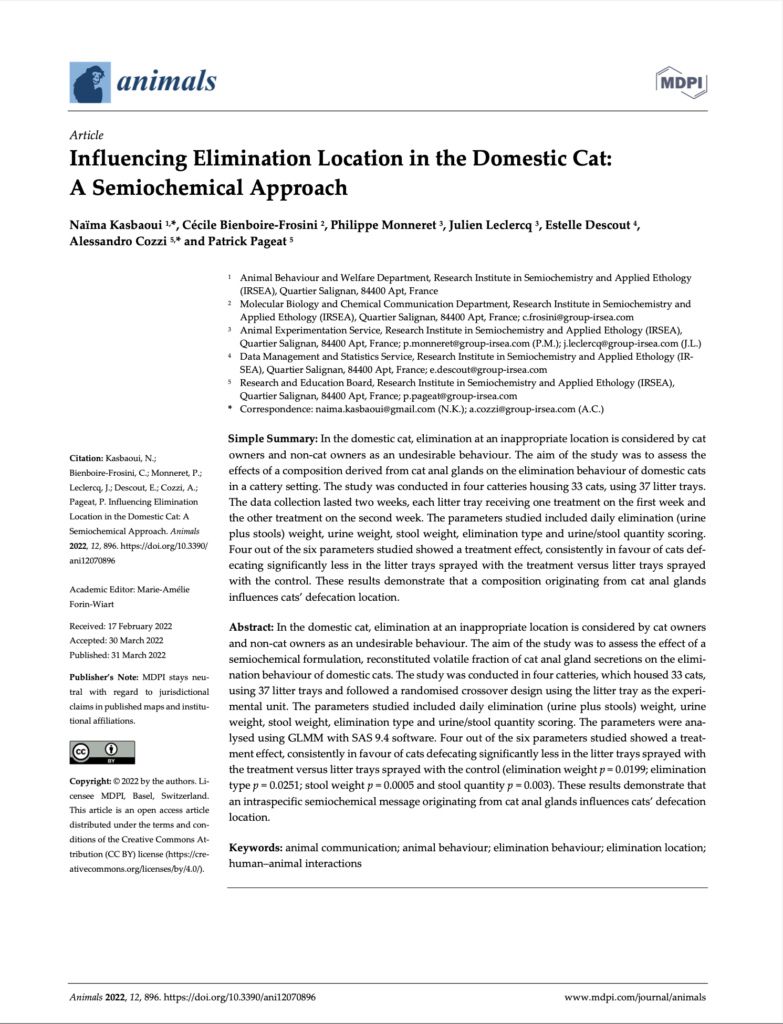Abstract:
In the domestic cat, elimination at an inappropriate location is considered by cat owners and non‐cat owners as an undesirable behaviour. The aim of the study was to assess the effect of a semiochemical formulation, reconstituted volatile fraction of cat anal gland secretions on the elimi‐ nation behaviour of domestic cats. The study was conducted in four catteries, which housed 33 cats, using 37 litter trays and followed a randomised crossover design using the litter tray as the experi‐ mental unit. The parameters studied included daily elimination (urine plus stools) weight, urine weight, stool weight, elimination type and urine/stool quantity scoring. The parameters were ana‐ lysed using GLMM with SAS 9.4 software. Four out of the six parameters studied showed a treat‐ ment effect, consistently in favour of cats defecating significantly less in the litter trays sprayed with the treatment versus litter trays sprayed with the control (elimination weight p = 0.0199; elimination type p = 0.0251; stool weight p = 0.0005 and stool quantity p = 0.003). These results demonstrate that an intraspecific semiochemical message originating from cat anal glands influences cats’ defecation location.
Auteur: Naïma Kasbaoui, Cécile Bienboire‐Frosini, Philippe Monneret, Julien Leclercq, Estelle Descout, Alessandro Cozzi, and Patrick Pageat
Keywords: animal communication; animal behaviour; elimination behaviour; elimination location; human–animal interactions
En savoir plus ici: https://doi.org/10.3390/ani12070896

